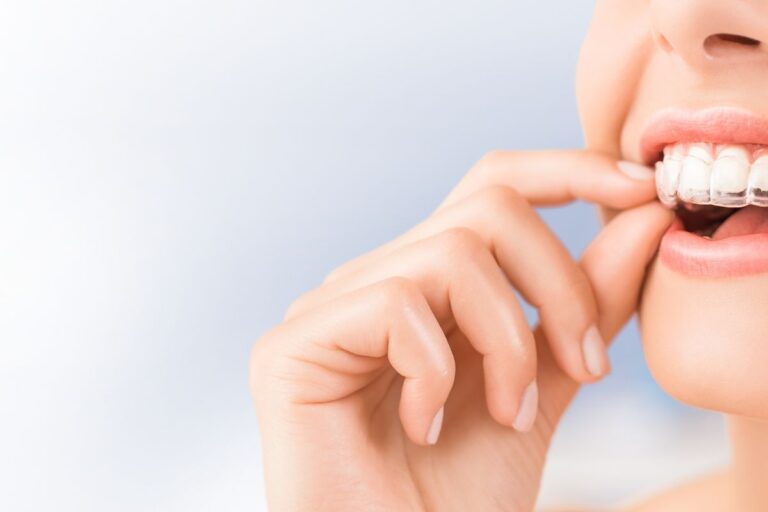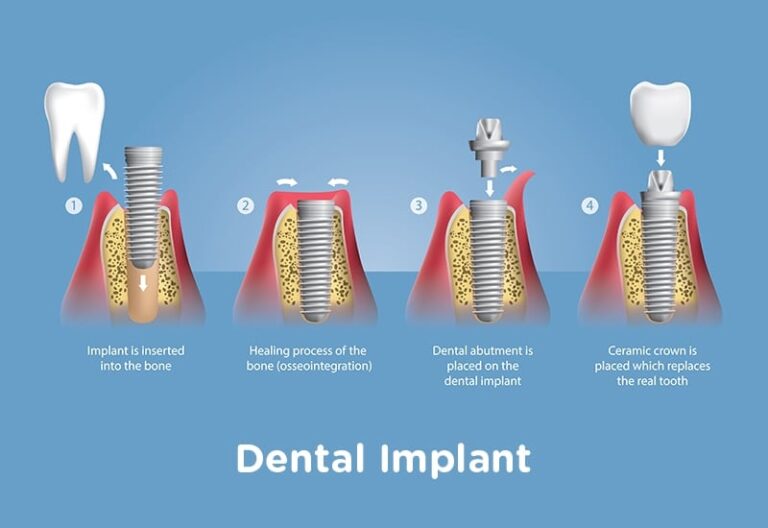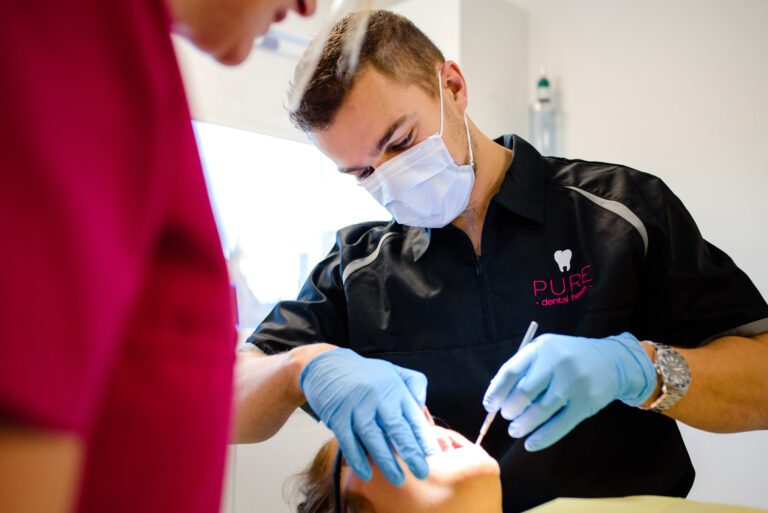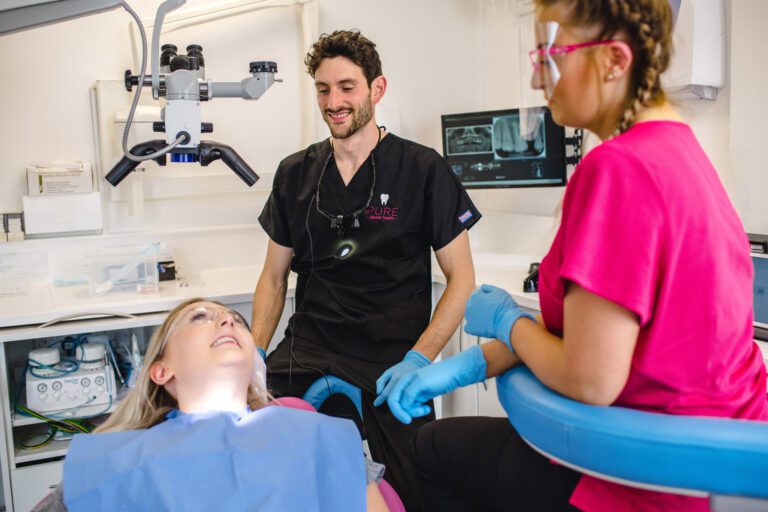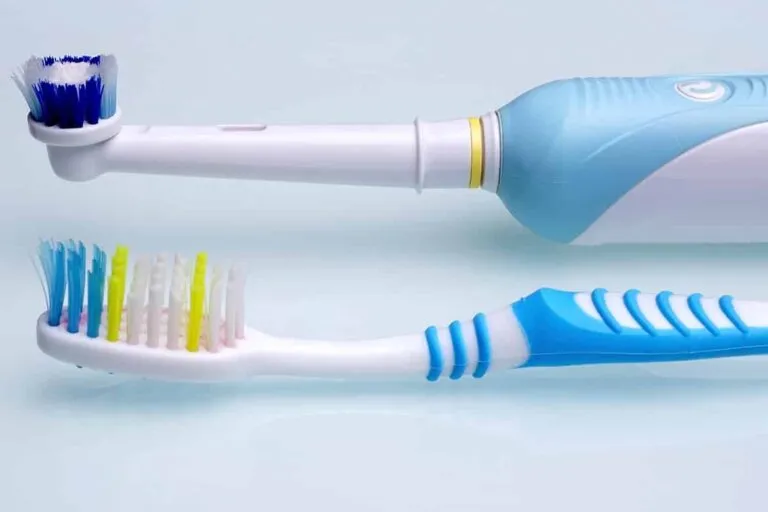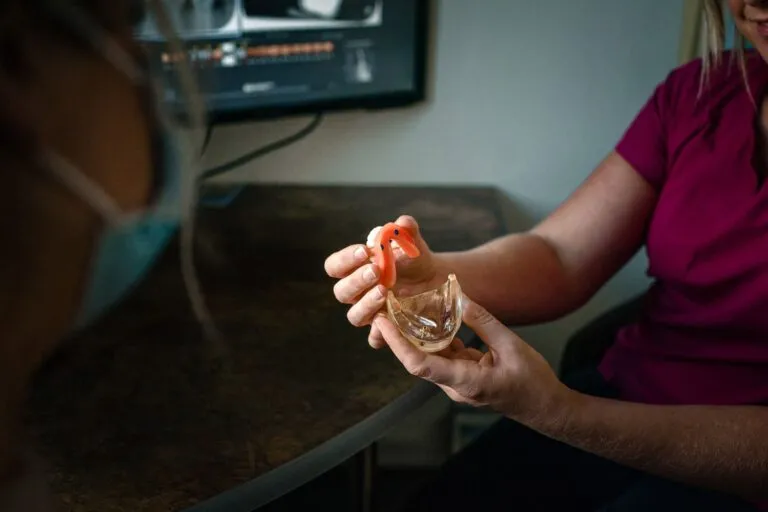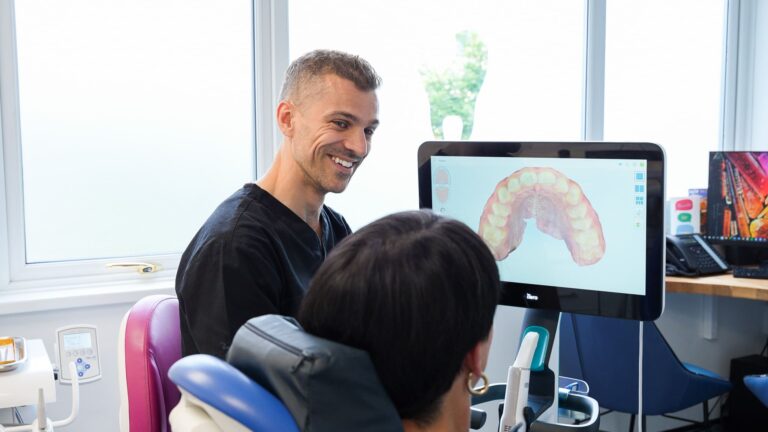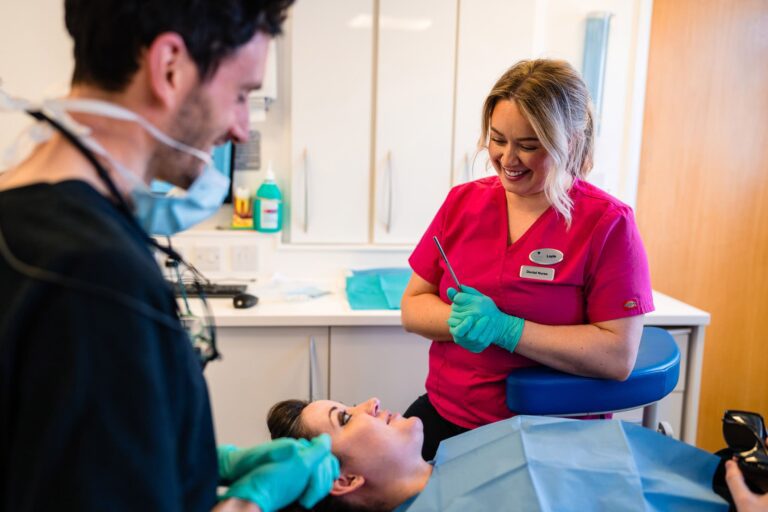You’ve seen the adverts, heard the success stories, but you’re still wondering: does Invisalign work, or is it too good to be true?
With any investment in your smile, you deserve honest, evidence-based answers – not just marketing promises. The good news? Invisalign has successfully treated over 14 million patients worldwide, and clinical research consistently shows it’s highly effective for the right cases. In this guide, we’ll walk you through everything you need to know before starting Invisalign treatment, from the science behind clear aligners to real-world results so that you can make a confident, informed decision about your smile journey.
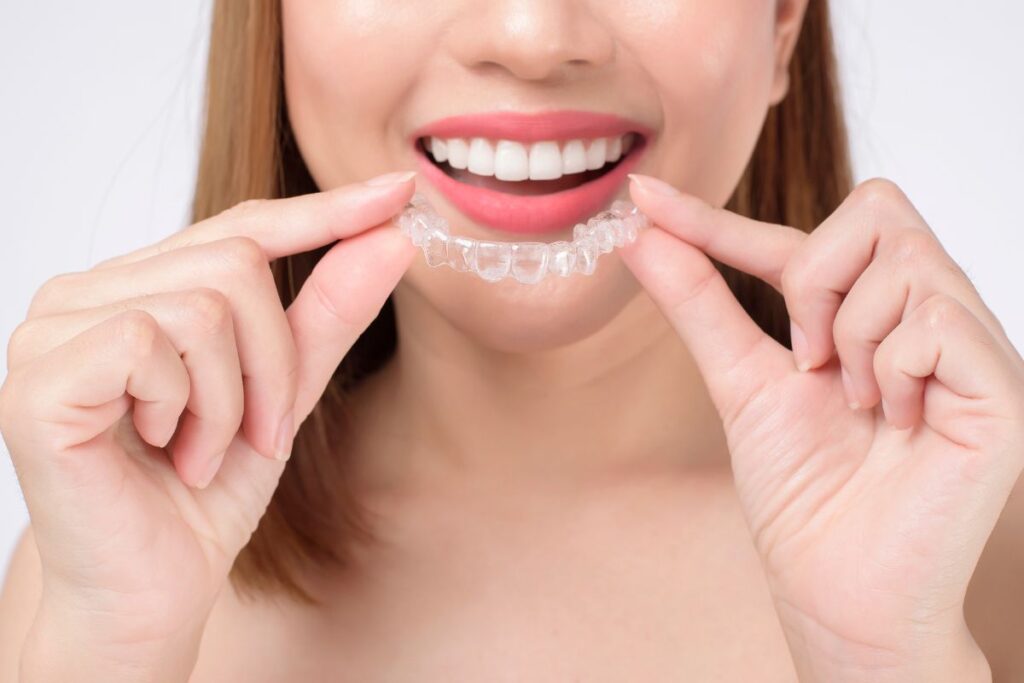
What is Invisalign and How Does It Work?
Invisalign is a modern orthodontic treatment that uses a series of custom-made, clear plastic aligners for gradual teeth straightening. Unlike traditional metal braces with brackets and wires, these virtually invisible trays fit snugly over your teeth and can be removed for eating and cleaning.
Each aligner is designed to make precise, controlled movements to shift your teeth into their ideal positions. You’ll wear each set of aligners for 1-2 weeks before progressing to the next set in the series, with each one building on the progress of the last. Most patients wear between 20 and 40 sets of aligners throughout their treatment, though this varies depending on individual needs.
The process works through consistent, gentle pressure applied to specific teeth at specific times. This controlled force gradually moves your teeth through the bone, allowing your smile to transform week by week without the discomfort and visibility of metal braces.
The Science Behind Clear Aligners
The effectiveness of Invisalign lies in understanding how teeth actually move. Your teeth aren’t fixed rigidly in your jawbone – they’re held in place by the periodontal ligament, a flexible tissue that connects each tooth root to the surrounding bone.
So how does Invisalign work? When Invisalign aligners apply gentle, constant pressure to your teeth, something remarkable happens at a biological level. On the side where pressure is applied, the bone gradually breaks down (a process called resorption). On the opposite side, new bone forms to fill the space (deposition). This natural remodelling process allows your teeth to shift into new positions safely and predictably.
Invisalign’s proprietary SmartTrack material is specifically engineered to effectively straighten your teeth. Unlike regular plastic, SmartTrack applies a gentle but constant force that’s precisely calibrated to encourage tooth movement without causing damage. The material is flexible enough to be comfortable yet firm enough to achieve results, making it significantly more effective than earlier clear aligner materials.
This is the same biological process that traditional braces use – Invisalign simply achieves it through clear plastic trays rather than metal brackets and wires.
The Step-by-Step Invisalign Treatment Process
- Your Consultation and Assessment
Your Invisalign journey begins with a comprehensive consultation at Pure Dental. Mike will examine your teeth, discuss your smile goals, and determine whether Invisalign is a suitable option for your case. We’ll take digital scans or impressions of your teeth to create a precise 3D model of your mouth.
- Creating Your Personalised Treatment Plan
Using advanced ClinCheck software, we’ll map out every stage of your treatment. You’ll actually see a digital preview of how your teeth will move and what your final smile will look like before you even start. This technology allows us to plan your treatment down to the smallest detail, ensuring predictable, effective results.
- Receiving Your Custom Aligners
Once your treatment plan is finalised, your custom aligners are manufactured at the Invisalign laboratory specifically for you. You’ll receive several sets at a time, along with detailed instructions on how to wear and care for them.
- Wearing Your Aligners
You’ll need to wear your aligners for 22 hours per day, removing them only to eat, drink anything other than water, and brush your teeth. Every 1-2 weeks, you’ll switch to the next set of aligners in the series, with each one making small adjustments to your tooth positions.
- Regular Progress Check-Ups
You’ll visit our Truro practice every 6-8 weeks so we can monitor your progress and provide your next set of aligners. These appointments are typically quick and straightforward – we’re simply checking that your teeth are moving according to plan and addressing any questions you might have.
- Completing Treatment with Retainers
Once you’ve worked through all your Invisalign aligners and achieved your new smile, you’ll need to wear retainers to maintain your results. Like all orthodontic treatments, teeth have a natural tendency to shift back, so retainers are essential for keeping your smile straight for life. We’ll provide you with custom Vivera retainers and guidance on how often to wear them.
The entire process typically takes 12-18 months for most patients, though simpler cases can be completed in as little as 6 months. Throughout your treatment, you’ll gradually see crooked teeth transform, with most patients noticing visible changes within the first 2-3 months.
Does Invisalign Work, Really? The Evidence
Yes, Invisalign works effectively when used for appropriate cases. With millions of patients treated worldwide since 1999, clear aligners have evolved from an experimental technology into a clinically proven orthodontic solution. The keyword here is “appropriate” – Invisalign delivers excellent results for mild to moderate orthodontic issues, but understanding what it can and cannot treat is essential for setting realistic expectations.
The evidence speaks for itself: peer-reviewed research consistently shows that Invisalign achieves comparable outcomes to traditional braces for suitable cases. However, success also depends on case selection, patient compliance with wearing aligners 20-22 hours daily, and working with an experienced provider (like Mike, who has over a decade of orthodontic expertise!).
Let’s look at what the research actually tells us about Invisalign’s effectiveness.
Clinical Success Rates and Research
Research comparing Invisalign to traditional braces shows similar effectiveness for treating mild to moderate crowding, spacing issues, and certain bite problems.
A 2017 study evaluating treatment effectiveness using the Peer Assessment Rating (PAR) index found that Invisalign produced comparable results to conventional fixed braces when used for suitable cases. The study emphasised that provider experience and proper case selection were critical factors in achieving optimal outcomes.
Newer Invisalign technology has further enhanced effectiveness. The precision of 3D image planning allows orthodontists to predict tooth movements with remarkable accuracy, resulting in more predictable results than ever before.
What’s particularly encouraging is the long-term stability data. Studies following patients 2-5 years post-treatment show that Invisalign results remain stable when patients wear their retainers as directed – just like with traditional braces.
The bottom line? When Invisalign is used for the right cases by experienced practitioners, the scientific evidence confirms it works exceptionally well.
Which Orthodontic Issues Can Invisalign Treat?
Invisalign has proven effective for a wide range of orthodontic concerns. Here’s what clear aligners can successfully address:
- Crowding and Overlapping Teeth
- Gaps and Spacing Issues
- Overbites
- Underbites
- Crossbites
- Open Bites
- Rotated Teeth
The technology has advanced significantly since Invisalign first launched. Features like precision cuts, power ridges, and attachments (small tooth-coloured bumps bonded to teeth) allow for more complex movements than earlier versions could achieve.
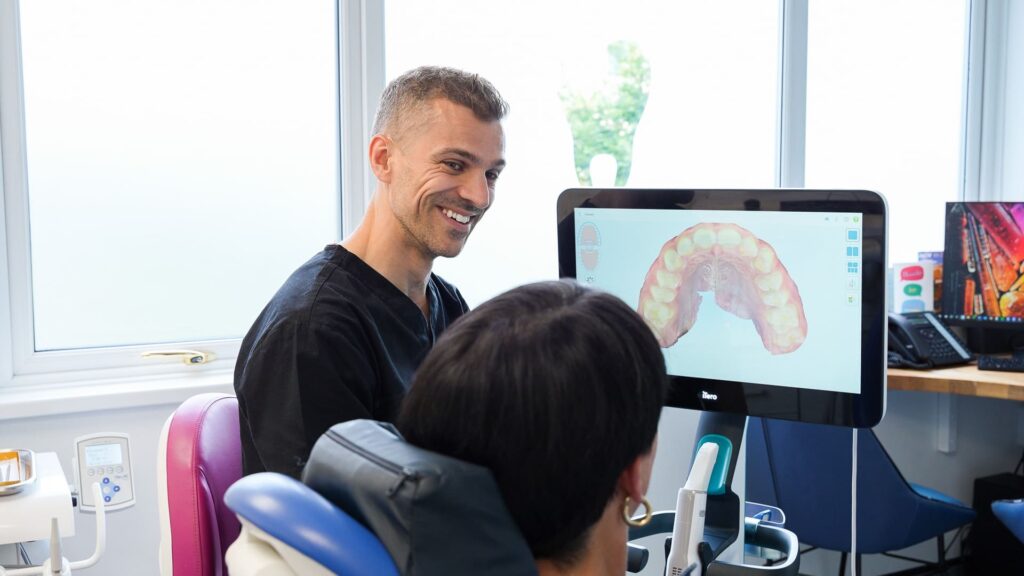
When Invisalign May Not Be the Best Option
While Invisalign is remarkably versatile, it’s not the ideal solution for every case. Honesty is crucial here – choosing the wrong treatment can lead to disappointing results and wasted time and money.
Severe Orthodontic Complexity
Cases involving severe crowding, significant jaw misalignment, or teeth that need to be moved vertically often respond better to traditional braces. Metal braces can apply more complex forces in multiple directions simultaneously, making them more effective for challenging cases.
Heavily Rotated Teeth
While Invisalign can handle some rotation, teeth that are severely twisted (particularly canines and back molars) may require the precise control that brackets and wires provide. The round shape of these teeth makes them difficult for aligners to grip effectively.
Large Gaps or Extractions
If your treatment plan requires tooth extractions or closing very large gaps (more than 6mm), traditional braces typically achieve more predictable results. Moving teeth over longer distances can be more challenging with clear aligners alone.
Significant Bite Corrections
Severe overbites, underbites, or cases requiring substantial jaw repositioning may exceed what Invisalign can accomplish. Some patients benefit from a combination approach – using traditional braces first, then Invisalign for refinement.
Compliance Concerns
Invisalign requires disciplined, consistent wear of 20-22 hours daily. If you’re concerned about your ability to maintain this schedule, or if you’re considering treatment for a younger teenager who may struggle with compliance, traditional braces might be more reliable since they work continuously without requiring patient cooperation.
Certain Dental Conditions
Active gum disease, significant bone loss, or severely short tooth roots may make any orthodontic treatment riskier. These conditions need to be addressed before starting Invisalign or may rule out orthodontic treatment altogether.
During your consultation at Pure Dental, Mike will conduct a thorough assessment and provide an honest recommendation. If Invisalign isn’t right for your case, we’ll explain why and discuss alternative options, such as traditional or ceramic braces, that might better suit your needs. Our goal is always to recommend the treatment that will give you the best possible outcome!
Remember, choosing the appropriate treatment from the start is far better than discovering months into Invisalign that it’s not achieving the results you hoped for.
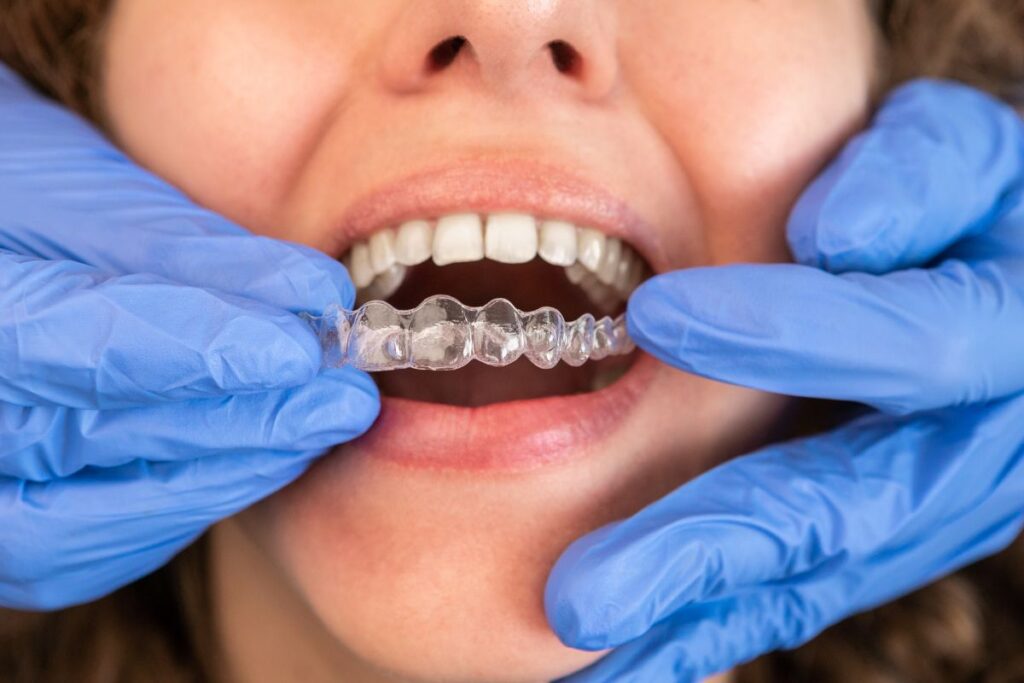
How Long Does Invisalign Take to Work?
Most Invisalign patients complete their treatment in 12-18 months, though you’ll start noticing visible changes to your smile much sooner than that.
Average Treatment Timeline
Treatment duration varies significantly based on case complexity, with simple alignment issues resolving in as little as 6-9 months while more complex cases may require 18-24 months to achieve optimal results.
When You’ll Start Seeing Results
The majority of patients notice visible improvements within 2-3 months of starting treatment, with teeth beginning to shift into better positions even though the full transformation takes longer to complete.
Factors That Affect Treatment Speed
Your treatment timeline depends on three key factors: the complexity of your orthodontic issues, how consistently you wear your aligners for the required 20-22 hours daily, and how your individual biology responds to tooth movement.
Real Results: What Patients Experience
Beyond the clinical data and success rates, understanding what Invisalign actually feels like day-to-day helps you know what to expect from your treatment journey. Real patients experience a gradual transformation that builds confidence week by week, with physical changes accompanied by an emotional boost as their smile improves.
Timeline of Changes
During the first few weeks, you’ll adjust to wearing aligners and may notice slight pressure with each new set – this is the aligners working and is completely normal. By months 2-3, you’ll start seeing visible improvements like straighter front teeth or closing gaps, and by month 6, the transformation becomes obvious to friends and family, with your final results emerging in the last few months of treatment.

Success Stories from Our Cornwall Patients
At our Truro practice, we’ve helped countless Cornwall residents transform their smiles, from professionals seeking discreet treatment to parents who finally prioritised their own dental health after years of putting it off.
One recent patient came to us with crowded front teeth that had bothered her for decades – within 14 months of Invisalign treatment, she achieved the confident smile she’d always wanted and now says it’s one of the best investments she’s ever made.
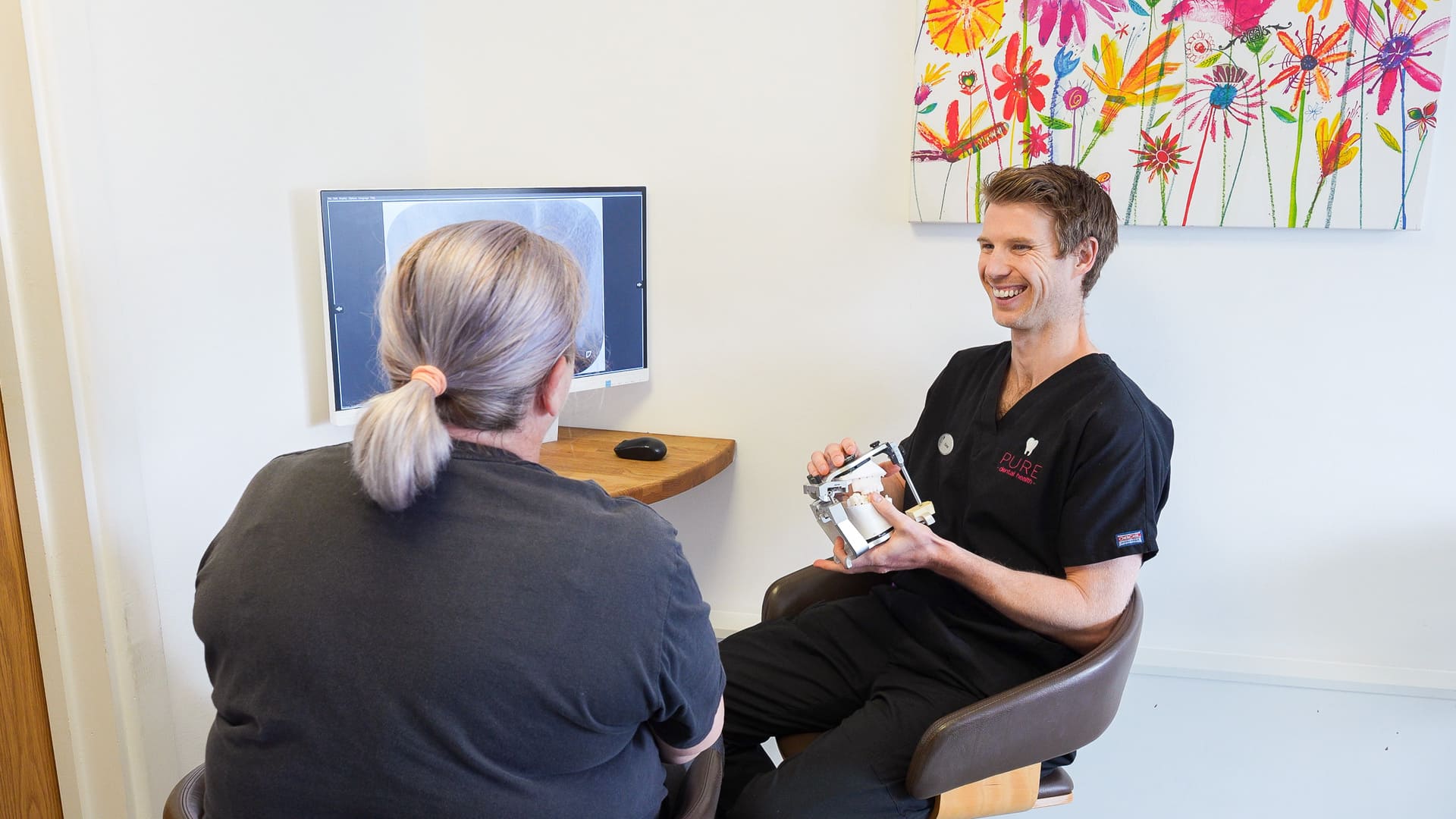
Common Misconceptions About Invisalign Effectiveness
Despite Invisalign’s proven track record with millions of patients, several persistent myths continue to create doubt about its effectiveness. Let’s address the most common misconceptions with evidence-based facts so you can make an informed decision.
“It’s Just for Minor Issues”
While Invisalign started as a solution for minor alignment problems, the technology has advanced dramatically and can now treat moderate crowding, spacing, overbites, underbites, and crossbites effectively. Though severe or highly complex cases may still require traditional braces, Invisalign handles a far broader range of orthodontic issues than most people realize.
“It Takes Longer Than Braces”
This is actually the opposite of reality – Invisalign treatment typically takes 12-18 months compared to 18-24 months for traditional braces. In many cases, Invisalign delivers results faster because the aligners can apply targeted pressure to specific teeth rather than moving all teeth simultaneously like braces do.
“Results Aren’t as Good as Braces”
Clinical research consistently shows that Invisalign achieves comparable outcomes to traditional braces for appropriate cases, with success rates around 90% when used correctly. The final results are equally stable and long-lasting, provided patients wear their retainers as directed after treatment – just as they would need to do after braces.
“Invisalign Only Works for Teenagers”
In reality, the majority of Invisalign patients are adults, and age is not a limiting factor for treatment effectiveness. While bone remodeling may occur slightly slower in adults than in teenagers, Invisalign works successfully for patients in their 20s, 40s, 60s, and beyond – making it an excellent option for adults who want to improve their smile without the visibility of metal braces.
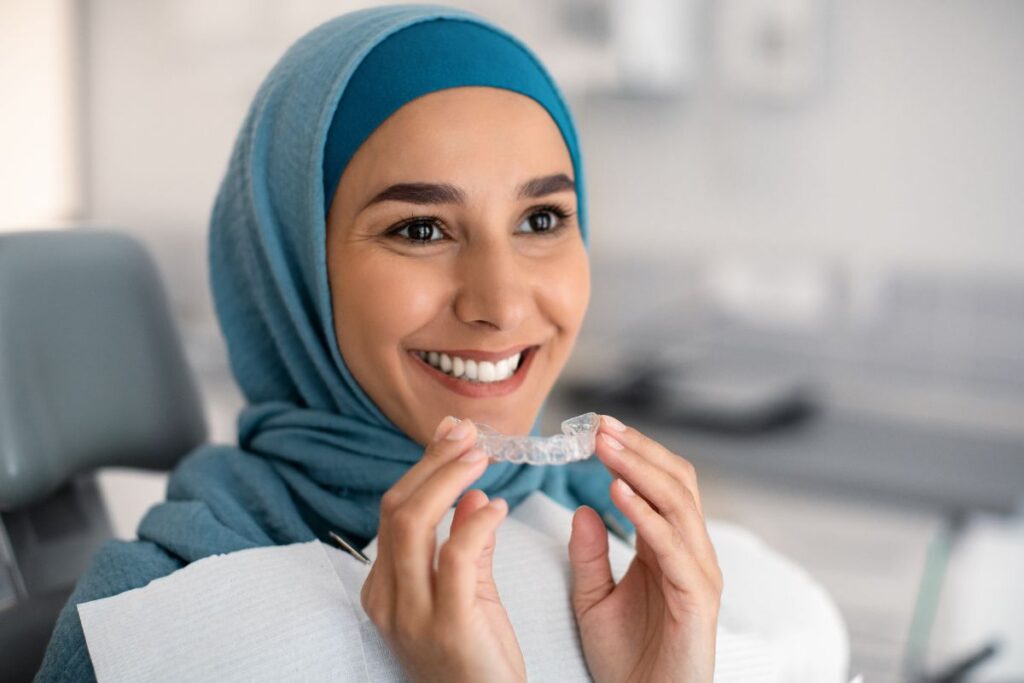
What You Need to Know Before Starting Invisalign
Before committing to Invisalign treatment, there are several practical considerations beyond just “does Invisalign work?” Understanding whether you’re a suitable candidate, the financial investment required, the daily lifestyle commitment, and the long-term maintenance needed will help you make a confident, informed decision. Let’s explore the essential factors that determine whether Invisalign is the right choice for you.
Am I a Good Candidate?
The best Invisalign candidates are individuals with mild to moderate orthodontic issues, who are committed to wearing aligners 20-22 hours daily. You’ll also need good oral health – active gum disease, untreated tooth decay, or significant bone loss must be addressed before starting orthodontic treatment. During your complimentary consultation at Pure Dental, Mike will assess your teeth, discuss your goals, and provide an honest evaluation of whether Invisalign can work for you and achieve the results you’re hoping for.
Financial Considerations
Invisalign treatment at Pure Dental starts at £2,600, with the final cost depending on your case complexity and treatment duration. While this represents a significant investment, we offer flexible dental finance options that allow you to spread the cost over 12-24 months, making treatment more accessible without requiring the full amount upfront.
Lifestyle Requirements
Invisalign requires genuine commitment to succeed – you must wear your aligners for 20-22 hours every day, removing them only for eating, drinking anything other than water, and brushing your teeth.
This means building a routine of removing aligners before meals, brushing your teeth afterwards, and immediately replacing them, which can feel challenging initially but becomes second nature within a few weeks. You’ll also need to clean your aligners daily, carry a case to store them safely when eating out, and attend check-up appointments every 6-8 weeks at our Truro practice to monitor your progress.
The Importance of Retainers
Here’s a crucial truth that often surprises patients: achieving straight teeth is only half the journey – keeping them straight requires wearing retainers, potentially for life.
After any orthodontic treatment, including Invisalign, your teeth have a natural tendency to shift back toward their original positions, which is why retainers are essential for maintaining your results. While you’ll initially wear them full-time, most patients eventually transition to wearing them only at night to preserve their beautiful new smile permanently.

Why Choose Pure Dental for Your Invisalign Treatment?
Choosing the right provider is just as important as choosing the right treatment – Invisalign’s success depends heavily on the expertise and care of the dental professional guiding your journey.
At Pure Dental in Truro, you’ll benefit from specialist orthodontic knowledge combined with the personalised, patient-focused approach that our Cornwall practice is known for.
We understand that transforming your smile is a significant decision, which is why we’re committed to providing honest assessments, transparent pricing, and supportive care throughout every stage of your treatment.
Our Orthodontic Experience
Mike Bassett-Cross brings over a decade of specialist orthodontic experience to Pure Dental, having held a clinical assistant post in Orthodontics at Great Western Hospital, Swindon, for ten years. Mike has a special interest in orthodontics. He has been providing fixed braces for adults and children for 23+ years.
This advanced training means he has the expertise to assess complex cases accurately, create effective treatment plans, and guide patients to successful outcomes – not all dentists offering Invisalign have this level of specialist orthodontic knowledge. Mike’s approach combines technical precision with genuine care for each patient’s individual goals, ensuring you receive treatment recommendations based on what will truly work best for your smile, not simply what you initially request.
Our Cornwall-Based Care
Our spa-like dental practice in Truro offers a calming, comfortable environment that’s a world away from clinical, intimidating dental offices – we’re here to help anxious patients feel relaxed and supported throughout their treatment.
We pride ourselves on transparency, offering complimentary treatment consultations where we’ll provide honest advice about whether Invisalign will work for you, and flexible finance options to make your dream smile achievable without financial stress.
Your Next Steps: Starting Your Invisalign Journey
If you’re ready to explore whether Invisalign can transform your smile, the first step is simple: book a complimentary consultation at Pure Dental, where we’ll assess your teeth, answer your questions, and provide honest guidance on the best path forward.
Book Your Complimentary Consultation
We offer no-obligation treatment consultations where we will examine your teeth using advanced 3D scanning technology, show you a preview of your potential results, and provide transparent advice about whether Invisalign is the right solution for your specific needs – all at no cost to you.
Questions to Ask During Your Consultation
Come prepared to ask about your specific treatment timeline, the expected final results for your case, the total cost of Invisalign and available payment options, and any potential challenges or limitations Mike foresees with your orthodontic situation.
So Does Invisalign Work? The Conclusion
So, does Invisalign work? Absolutely. With proven clinical effectiveness, millions of successful patients worldwide, and the ability to treat a wide range of dental issues, Invisalign has earned its place as a trusted alternative to traditional braces.
Ready to discover if Invisalign is right for you? Book your complimentary consultation with Mike today, and let’s explore how we can help you achieve the confident smile you’ve always wanted.
Frequently Asked Questions About Invisalign Effectiveness
How does Invisalign work compared to braces?
Invisalign is equally effective as traditional braces for treating mild to moderate orthodontic issues, with clinical studies showing comparable success rates around 90%. For complex cases involving severe bite problems or significant tooth rotations, traditional braces may still be more effective due to their ability to apply more complex forces in multiple directions.
Can Invisalign fix my specific dental issue?
Invisalign successfully treats crowding, spacing, gaps, overbites, underbites, crossbites, and mild to moderate rotations. However, the only way to know for certain is through a professional assessment – book a complimentary consultation at Pure Dental where we can evaluate your specific case and provide an honest recommendation about whether Invisalign will achieve your desired results.
What happens if I don’t wear my aligners enough?
Skipping wear time significantly compromises your results. Your teeth will move more slowly than planned, extending your treatment timeline, and in some cases may drift back toward their original positions, requiring you to repeat earlier aligners. Consistent 20-22 hour daily wear is essential for Invisalign to work effectively and achieve results within the predicted timeframe.
Will my teeth shift back after treatment?
Yes, teeth naturally tend to shift after any orthodontic treatment, which is why wearing retainers is essential for maintaining your results. If you wear your retainers as directed, your straight smile will remain stable for life. Neglecting retainer wear is the most common reason teeth shift back after successful Invisalign treatment.
How do I know if it’s working?
You’ll notice your aligners feeling tight when you first insert a new set, which indicates they’re applying pressure to move your teeth. Most patients see visible changes within 2-3 months, such as straighter front teeth or closing gaps. During your regular check-ups every 6-8 weeks, we’ll track your progress against your treatment plan to ensure everything is moving as expected.
Is Invisalign worth the investment?
For most patients, yes – Invisalign delivers life-changing results that boost confidence, improve oral health, and last for decades when retainers are worn properly. Beyond the aesthetic benefits, straighter teeth are easier to clean, reduce wear on tooth surfaces, and can alleviate jaw discomfort from misaligned bites. Consider it an investment in both your health and your quality of life, not simply a cosmetic expense.
Can Invisalign work faster than braces?
Yes, Invisalign often delivers results faster than traditional braces. Average treatment time is 12-18 months for Invisalign compared to 18-24 months for braces, with some simple cases completing in as little as 6-9 months.
Whats the Invisalign success rate for adults?
Adults achieve the same high success rates as younger patients – approximately 90% for appropriate cases. While tooth movement may occur slightly slower in adults due to denser bone, age is not a limiting factor for Invisalign effectiveness. In fact, the majority of Invisalign patients are adults, and compliance rates are often higher because adult patients tend to be more committed to wearing aligners consistently.
